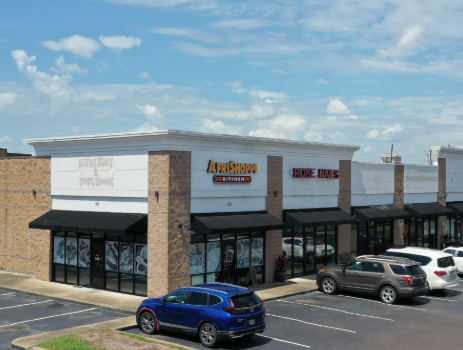
In commercial real estate, anchor tenants often take the spotlight, but there’s another important player that doesn’t always make it to the rent roll—the shadow anchor. These influential tenants, though not directly part of the investment property, can significantly affect its performance, driving traffic and boosting demand for space in the vicinity.
Understanding Shadow Anchors
A shadow anchor refers to a large retail tenant, typically a big-box store like Walmart, Costco, or Target, that’s located near a commercial property but isn’t owned or included in the property’s lease agreement. While they don’t contribute rent to the landlord of the neighboring property, their ability to attract large volumes of foot traffic benefits nearby tenants.
For example, a retail center near a Home Depot may experience higher customer visits and improved tenant retention due to Home Depot’s ability to draw in shoppers, even if the landlord does not own the Home Depot parcel.
Why Shadow Anchors Matter to Investors
- Increased Foot Traffic Without Added Risk
Shadow anchors help create a steady stream of customers without the landlord having to assume any leasing or operational risks. Since the performance of the shadow anchor doesn’t affect the center’s net operating income (NOI), the property still benefits from the foot traffic they generate.
Research from the International Council of Shopping Centers (ICSC) shows that centers near high-performing anchors can see 20-40% more foot traffic without the added cost of paying for the anchor.
- Higher Demand and Stability for Tenants
Retailers prefer locations where consumers are already present. A well-performing shadow anchor can increase demand for space, reduce vacancy periods, and even allow landlords to charge higher rents. National and regional retailers often conduct site evaluations and may prioritize locations near established top-performing anchors.
- Reduced Vacancy Risk
Centers with strong shadow anchors are typically more resilient in challenging economic times. The consistent foot traffic ensures that tenants maintain steady sales, making them less likely to close. This stability helps sustain long-term leases and a reliable rent roll.
- Potential for Value Enhancement
When repositioning or re-tenanting a retail property, proximity to a shadow anchor can significantly aid in leasing efforts. Whether the property is undergoing renovations or experiencing tenant turnover, the presence of a nearby shadow anchor can make it easier to attract new tenants.
How FNRP Leverages Shadow Anchors
At First National Realty Partners, we factor in the influence of nearby shadow anchors when evaluating potential investments. This is particularly true for properties close to top-performing grocers, home improvement stores, or warehouse clubs. We believe that these anchors provide long-term competitive advantages and support the overall value of the property.
Key Considerations for Investors
Not all shadow anchors are equally beneficial. When evaluating a commercial property with a shadow anchor, investors should consider the following:
- Ownership: Is the shadow anchor independently owned, or is it part of a larger retail development?
- Longevity: Is the shadow anchor in a long-term lease, or is its future uncertain?
- Accessibility: Does the property layout allow for shared foot traffic, or are the properties functionally isolated?
Final Thoughts
While shadow anchors may not be on the rent roll, they play a significant role in driving traffic, improving tenant demand, and increasing property value. For passive investors looking at retail centers, understanding the dynamics of shadow anchors can help identify investment opportunities with strong long-term potential.









